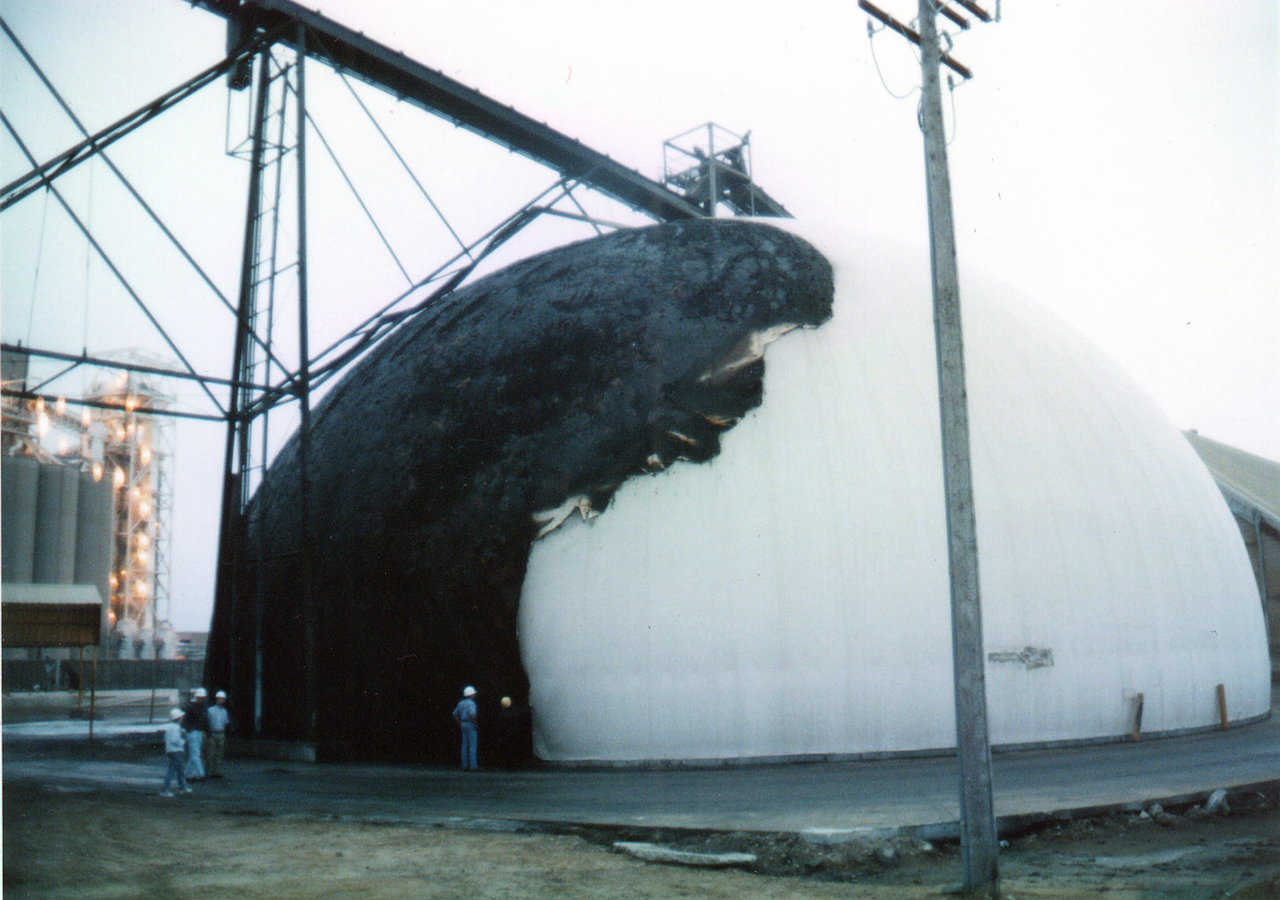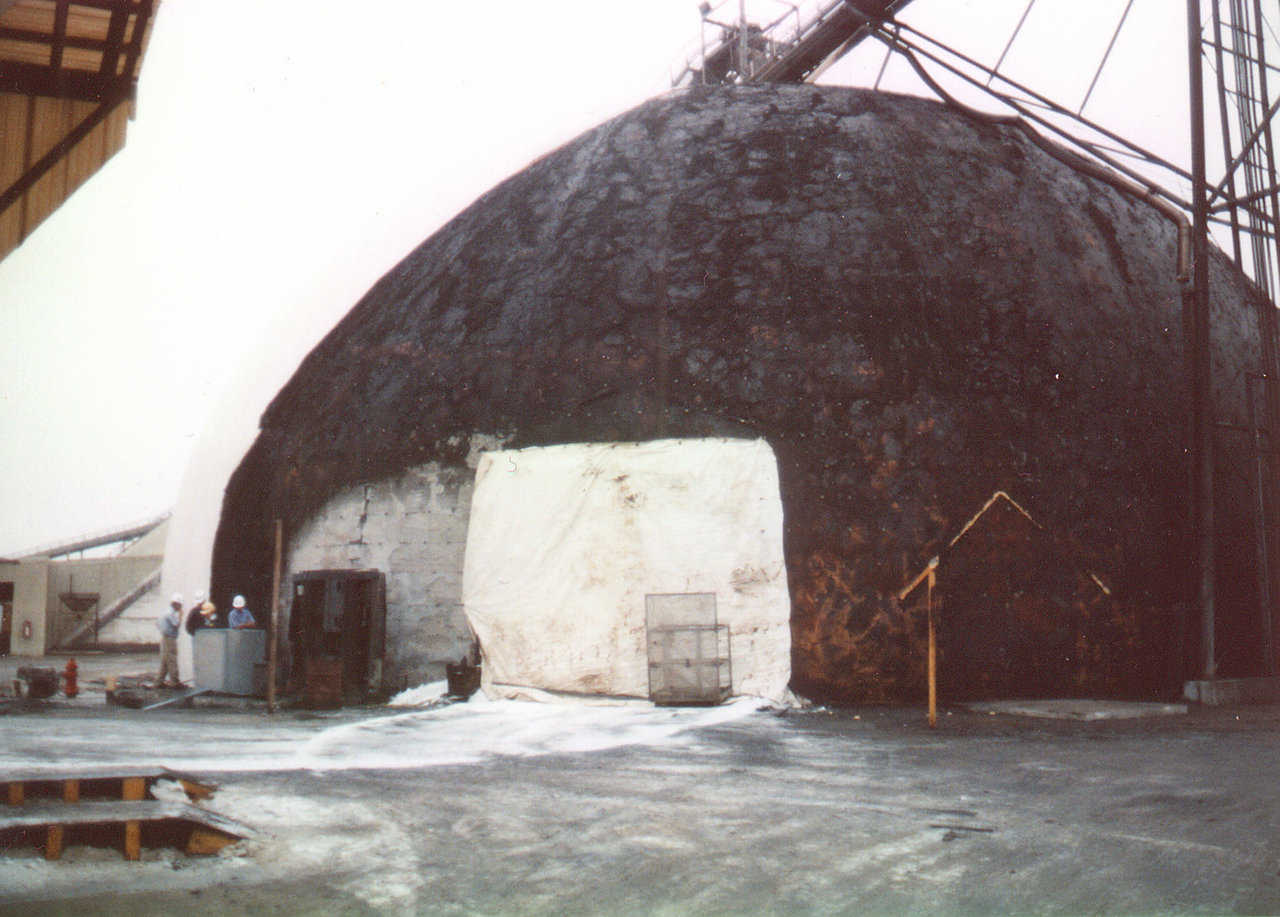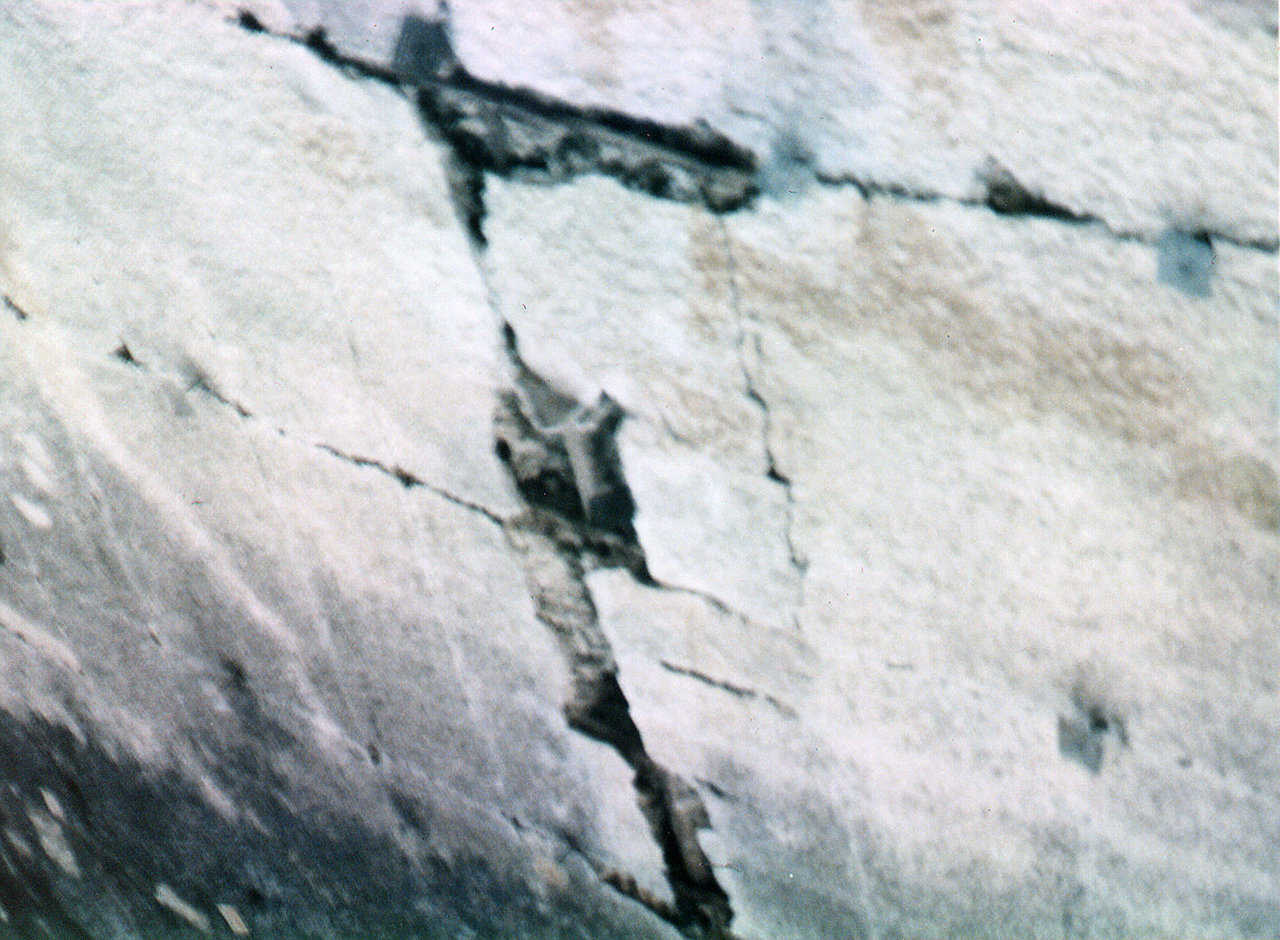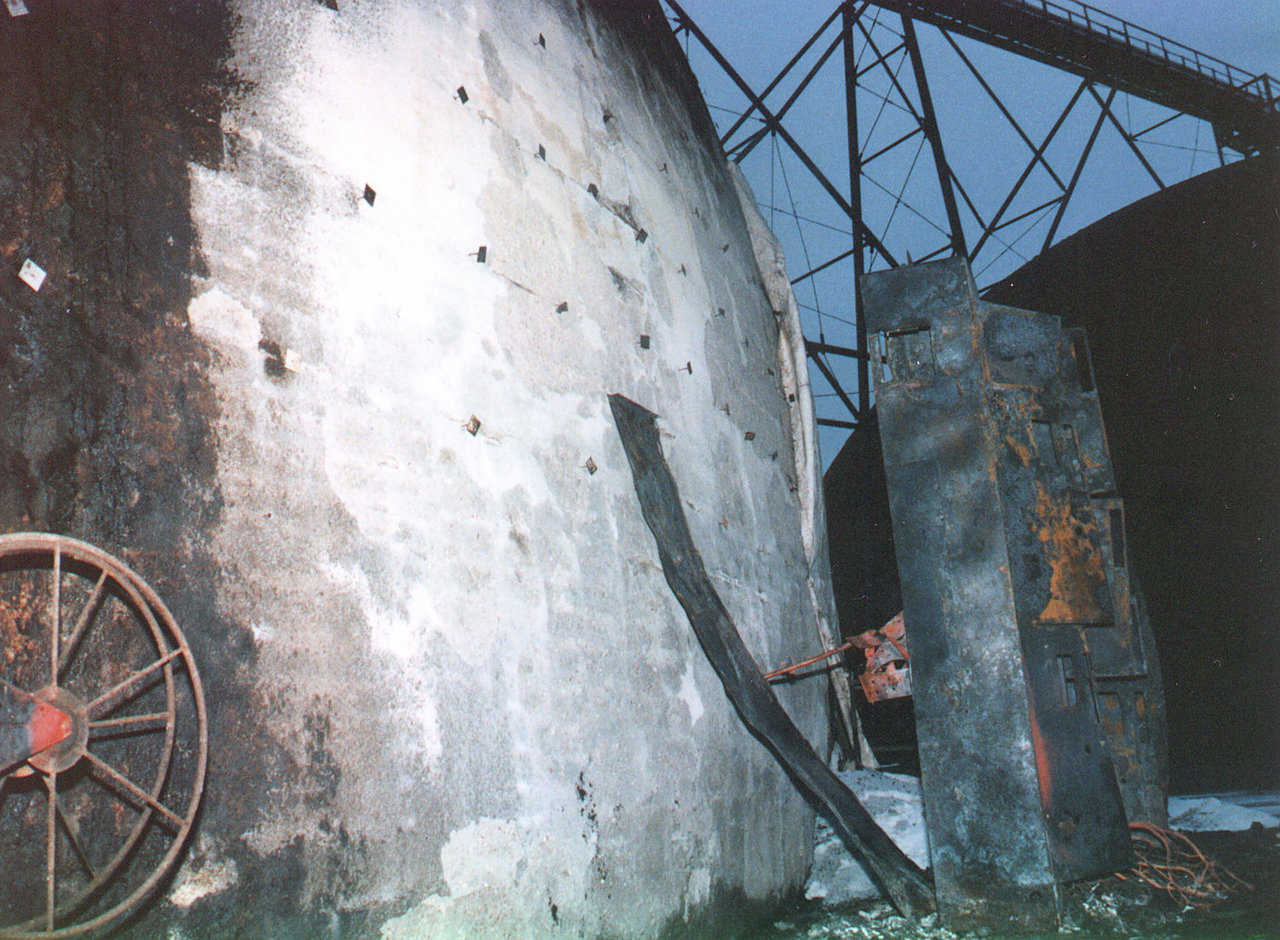Foam: Fire Hazard and Fire Barrier

Fire damage from three wood structures and 300 gallons of transformer oil – Cargill – Channelview, TX
A violent, wind-driven fire fueled by three wood structures and 300 gallons of transformer oil burned about a third of the covering off this fertilizer storage. The fire was the worst possible. Late at night, wind blew the fire directly toward the building. The fire department was not immediately called, so the oil burned completely. Damage was most severe to the exterior. In a 12-square-foot area, urethane was totally burned off, but the rest suffered more minor damage. The foam could be cleaned and a coating or metal cladding could be installed over it. No damage was detected on the inside of the Monolithic Dome.
Note that the foam held the fire back for a considerable time, and then the nonflammable concrete ended any possibility of the flames burning through to the stored product. Materials inside the dome were totally unaffected by the fire, and the dome’s concrete interior never even got warm.

Fire Damage – Polyurethane only charred – Cargill – Channelville, TX
An outline of the wood building against the Monolithic Dome can be seen. This outline was left when the char from the two-by-fours was cleaned.

Fire damage is cosmetic and easily repaired – Cargill – Channelville, TX
With the foam burned off, the concrete is exposed. In a few places, sacrificial steel can be seen. This is a light network of rebar immediately tied against the urethane and covered with a small amount of concrete. Sacrificial steel is used as an anchor to tie the heavier steel reinforcing of the structure. So, the pitting pictured is of no consequence other than cosmetic.

Fire damage – Burned Transformer – Interior surface of dome never got warm – Cargill – Channelview, TX
Foam burned totally off the concrete exposed rebar hangers and bases, as well as the carcass of the old transformer. The 300 gallons of transformer oil, that were totally consumed, were in this area. But this building lost none of its functionality as a fertilizer bulk storage. Repairing damages only necessitated sandblasting or scrapping the charred foam and applying new foam.

Fire started by careless crooks.
This fire was started by some young men who were attempting to steal gasoline from the truck. One of the men dropped a cigarette. The fire blossomed and flashed over the entire structure in less than 5 minutes. They left their equipment in their hurry to get out.
The exposed foam intensified the heat to thousands of degrees F in just a few seconds. Note: the urethane on the door kept the fire from destroying the door.

Fire goes from bad to worse.
The truck tires fed the fire with heat and smoke. The insulation increased temperature which increased the speed at which the tires burned. The increased heat drooped the steel and melted the aluminum into puddles.

Warehouse was built in two sections.
One section was concrete block with a wood framed roof. The other section was a rigid frame metal building. The entire building was insulated with 1 inch of urethane foam on the interior surface.

Initial flashover of this fire set the wooden roof on fire.
Fuel provided by the roof was enough to burn off the urethane foam. Foam used on this structure was UL rated under 25 flame spread. It needed the extra fuel of the roof to burn off the foam. Note how the fire mangled all of the equipment within the sorting and bagging area.

Fire cooks the potatoes!
Concrete and twisted steel is all that survived — along with the baked potatoes.

Note the metal part of the building.
It is ruined — especially the roof structure. But it never fell in as might have been expected.

Fire melts the paint!
Where the air infiltrated around the dock, the fire damage was hottest and melted off the paint.

A sad survivor!
Much of the exterior of the building looks just fine. The building is destroyed but still standing.

Charred foam!
The UL rated foam (less than 25 flame spread) charred as the fire flashed over the interior of the building. In areas away from the wood there was not enough fuel to keep the fire going and it simply went out.

It is a fact;
All urethane should have a fire barrier over its face. It is not because it burns so well, but because it intensifies the fire by reflecting the heat back into the fire— thus accelerating it. The fire gets hotter and burns faster. Without extra fuel it will stop after the flashover.

What the flashover can do.
The flashover leaves behind a char that protects the foam from further burning unless there is a massive amount of heat near it. Urethane either burns very hot or not at all. It will flash when it is exposed and lines a building. But on the exterior of a building where the heat can get away, fire is not much of a threat.

Exposed urethane on interior walls is a serious mistake.
On the other hand, in the right place, it is amazing how much fire it can deflect — such as within the core of fire doors.